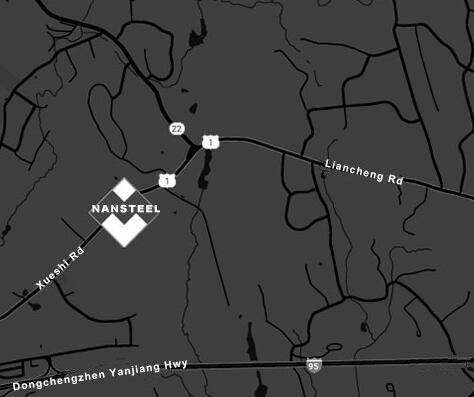Carbon steel plate is one of the most widely used basic materials in the industrial field. Its material grade classification directly determines the product's strength, toughness, processing performance, and applicable scenarios. It is the core basis for everything from engineering design and material selection to production and manufacturing.
Based on industry needs and technical standards, different countries and regions have formed a grading system centered on "carbon content and mechanical properties (yield strength, tensile strength, impact toughness)." The following is a detailed introduction to the main international material grades of carbon steel plate.
International mainstream standards: carbon steel plate material grade
1. European Standards (EN): Focus on structural safety
Based on the EN 10025 series (applicable to carbon steel and fine grain steel for structural use), grades are divided by yield strength and impact toughness. Common grades are:
S235JR/J0/J2: Low carbon steel (carbon content ≈ 0.17%), yield strength ≥ 235 MPa
JR: Normal temperature impact (20°C, impact energy ≥ 27J), suitable for general structures without low-temperature requirements (such as factory purlins and brackets);
J0: 0°C impact (impact energy ≥ 27J), suitable for mildly low-temperature environments (such as temperate outdoor components);
J2: -20°C impact (impact energy ≥ 27J), suitable for structures in cold regions (such as building frames in northern China).
S275JR/J0/J2/K2: Medium-low carbon steel, yield strength ≥275MPa, higher strength than S235, suitable for medium-load structures (such as bridge beams, equipment bases), K2 grade can withstand low temperatures of -40℃.
S355JR/J0/J2/K2: Medium carbon steel (carbon content ≈ 0.20%), yield strength ≥ 355MPa, combines strength and toughness, used for heavy-duty structures (such as large factory columns and crane main beams), and has strong low-temperature adaptability (K2 grade - 40℃ impact qualified).

2. American Standard (ASTM): Segmented by Application
ASTM A36: The most commonly used low-carbon steel (carbon content 0.25% max), with a yield strength ≥250 MPa and a tensile strength of 400-550 MPa. It has no low-temperature impact requirements and is suitable for general structures and mechanical parts (such as platform steel plates and simple brackets). It has strong global versatility.
ASTM A572: High-strength, low-alloy carbon steel (containing small amounts of Mn and V), divided into 50/60/65 grades, with A572 Gr.50 being the most commonly used. It has a yield strength ≥345MPa and a tensile strength ≥450MPa, and has better weather resistance than A36. It is used in bridges, high-pressure vessels, and vehicle structures.
ASTM A105: Carbon steel for forgings (but often extended to thick steel plates), carbon content 0.35% max, yield strength ≥275MPa, suitable for pressure pipes, valve bodies and other pressure-bearing parts.
Core basis for selecting carbon steel plate material grade
1. Load-bearing requirements: For light loads (such as fences), select Q195/Q215; for medium loads (building frames), select Q235/S235; for heavy loads (bridges/cranes), select Q275/S355/A572 Gr.50.
2. Ambient temperature: Select JR/A grade for room temperature; select J0/B grade for around 0℃; select J2/D grade / S355K2 for below -20℃.
3. Processing requirements: If welding is required (such as steel structures), select low carbon steel (Q235/20#); if cutting/heat treatment is required (such as shafts), select carbon steel (45#).
Read more: Carbon Steel Plate Thickness
Based on industry needs and technical standards, different countries and regions have formed a grading system centered on "carbon content and mechanical properties (yield strength, tensile strength, impact toughness)." The following is a detailed introduction to the main international material grades of carbon steel plate.
International mainstream standards: carbon steel plate material grade
1. European Standards (EN): Focus on structural safety
Based on the EN 10025 series (applicable to carbon steel and fine grain steel for structural use), grades are divided by yield strength and impact toughness. Common grades are:
S235JR/J0/J2: Low carbon steel (carbon content ≈ 0.17%), yield strength ≥ 235 MPa
JR: Normal temperature impact (20°C, impact energy ≥ 27J), suitable for general structures without low-temperature requirements (such as factory purlins and brackets);
J0: 0°C impact (impact energy ≥ 27J), suitable for mildly low-temperature environments (such as temperate outdoor components);
J2: -20°C impact (impact energy ≥ 27J), suitable for structures in cold regions (such as building frames in northern China).
S275JR/J0/J2/K2: Medium-low carbon steel, yield strength ≥275MPa, higher strength than S235, suitable for medium-load structures (such as bridge beams, equipment bases), K2 grade can withstand low temperatures of -40℃.
S355JR/J0/J2/K2: Medium carbon steel (carbon content ≈ 0.20%), yield strength ≥ 355MPa, combines strength and toughness, used for heavy-duty structures (such as large factory columns and crane main beams), and has strong low-temperature adaptability (K2 grade - 40℃ impact qualified).

2. American Standard (ASTM): Segmented by Application
ASTM A36: The most commonly used low-carbon steel (carbon content 0.25% max), with a yield strength ≥250 MPa and a tensile strength of 400-550 MPa. It has no low-temperature impact requirements and is suitable for general structures and mechanical parts (such as platform steel plates and simple brackets). It has strong global versatility.
ASTM A572: High-strength, low-alloy carbon steel (containing small amounts of Mn and V), divided into 50/60/65 grades, with A572 Gr.50 being the most commonly used. It has a yield strength ≥345MPa and a tensile strength ≥450MPa, and has better weather resistance than A36. It is used in bridges, high-pressure vessels, and vehicle structures.
ASTM A105: Carbon steel for forgings (but often extended to thick steel plates), carbon content 0.35% max, yield strength ≥275MPa, suitable for pressure pipes, valve bodies and other pressure-bearing parts.
Core basis for selecting carbon steel plate material grade
1. Load-bearing requirements: For light loads (such as fences), select Q195/Q215; for medium loads (building frames), select Q235/S235; for heavy loads (bridges/cranes), select Q275/S355/A572 Gr.50.
2. Ambient temperature: Select JR/A grade for room temperature; select J0/B grade for around 0℃; select J2/D grade / S355K2 for below -20℃.
3. Processing requirements: If welding is required (such as steel structures), select low carbon steel (Q235/20#); if cutting/heat treatment is required (such as shafts), select carbon steel (45#).
Read more: Carbon Steel Plate Thickness









